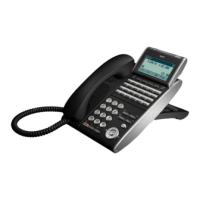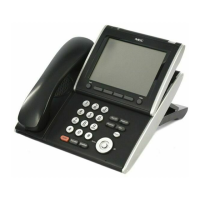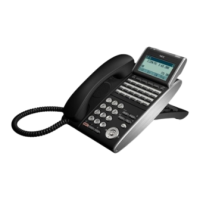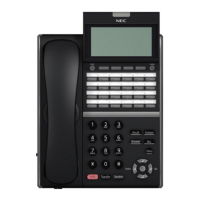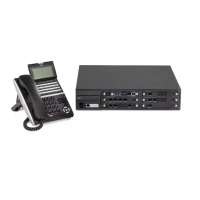Program
Number
Program Name/Description Assigned Data
84-12-17 Jitter Buffer Mode
If the jitter buffer is set to adaptive, the buffer is adjusted
(larger/smaller), depending upon network conditions.
If the jitter buffer is set to static, it will never adjust and al-
ways have the same size buffer.
1 = Static
3 = Adaptive Immediately
(default = 3)
84-12-18 Voice Activity Detection Threshold
This program is used to set the threshold of the db level
that the system uses to determine silence. If VAD is ena-
bled and this threshold is reached, the system will stop
transmitting “silence packets” across the network.
0~30 = -19dB~+10dB
0 = Adaptec
Threshold
1 = -19dB(-49dBm)
:
20 = 0dB (-30dBm)
:
29 = 9dBm(-21dBm)
30 = 10dBm(-20dBm)
(default = 20)
84-12-33 G.722 Audio Frame Size
Assign the G.722 Audio Frame Size
The smaller the packet sizes the more bandwidth that is
consumed. However when a smaller packet is lost in a
network a smaller amount of the voice is lost with it.
1 = 10ms
2 = 20ms
3 = 30ms
4 = 40ms
(default = 3)
84-12-35 G.722 Minimum Jitter Buffer size
This program assigns the minimum size that the jitter buf-
fer will use.
0 ~ 255ms
(default = 30ms)
84-12-36 G.722 Average Jitter Buffer size
This program assigns the average size that the jitter buf-
fer will use.
0 ~ 255ms
(default = 60ms)
84-12-37 G.722 Maximum Jitter Buffer size
This program assigns the maximum size that the jitter
buffer will use.
0 ~ 255ms
(default = 120ms)
84-12-38 RTP Filter
This program is used to avoid audio path problems in
times of heavy RTP traffic.
When enabled, the system will check the sender’s IP ad-
dress that is sending RTP packets. If it does not match
with the IP address of the actual caller, the system will ig-
nore it.
0 = Disable
1 = Enable
(default = 1)
84-34-01 VoIPDB Setup DTMF Relay Mode (02-Networking)
Select DTMF Relay Mode.
0 = Disable
1 = RFC2833
2 = H.245
Profile (1 ~ 6)
(default = 0)
84-34-02 This program assigns the way the system handles DTMF
across the SL Net network. For profile 1, Type 2 (Net-
working) this value should match in all SL Net systems.
96 ~ 127
(default = 110)
4.3 Call Routing - Outbound
Program
Number
Program Name/Description Assigned Data
11-01-01 System Numbering
This program is used to assign the Trunk Access code (9
by default) and the special trunk access code (unas-
signed at default).
The trunk access code used to make alternate calls must
be set to a type 4 (special trunk access code).
0 = Not Used
1 = Service Code
2 = Extension Number
3 = Trunk Access Code
4 = Individual Trunk Access
5 = Operator Access
6 = F-Route Access
8 = Networking System Access
9 = Dial Extension Analyze
(Refer to the SL2100 programming manual for
the default values of all tables)
ISSUE 1.0 SL2100
Networking Manual 13-23

